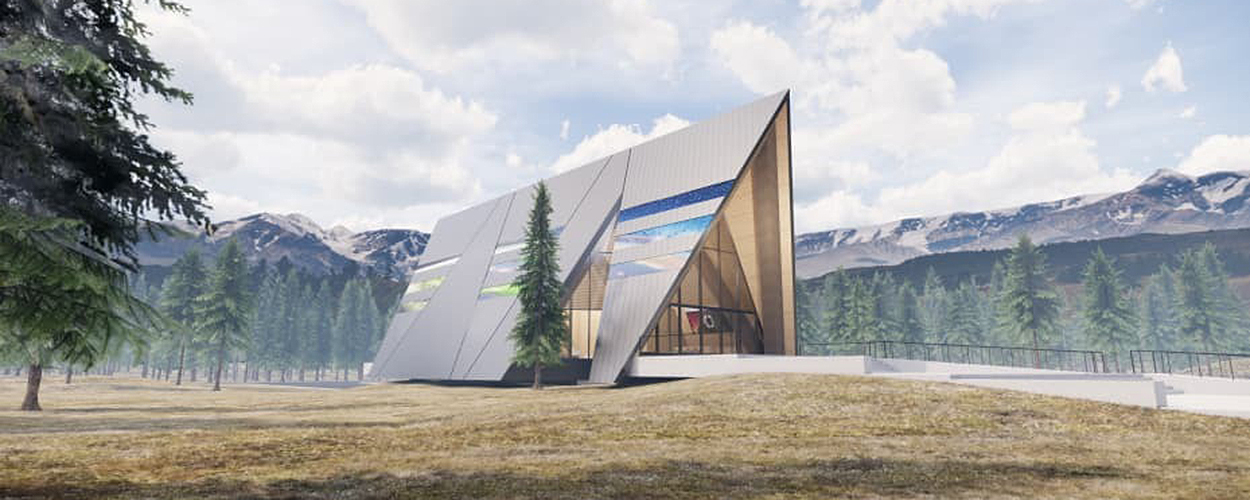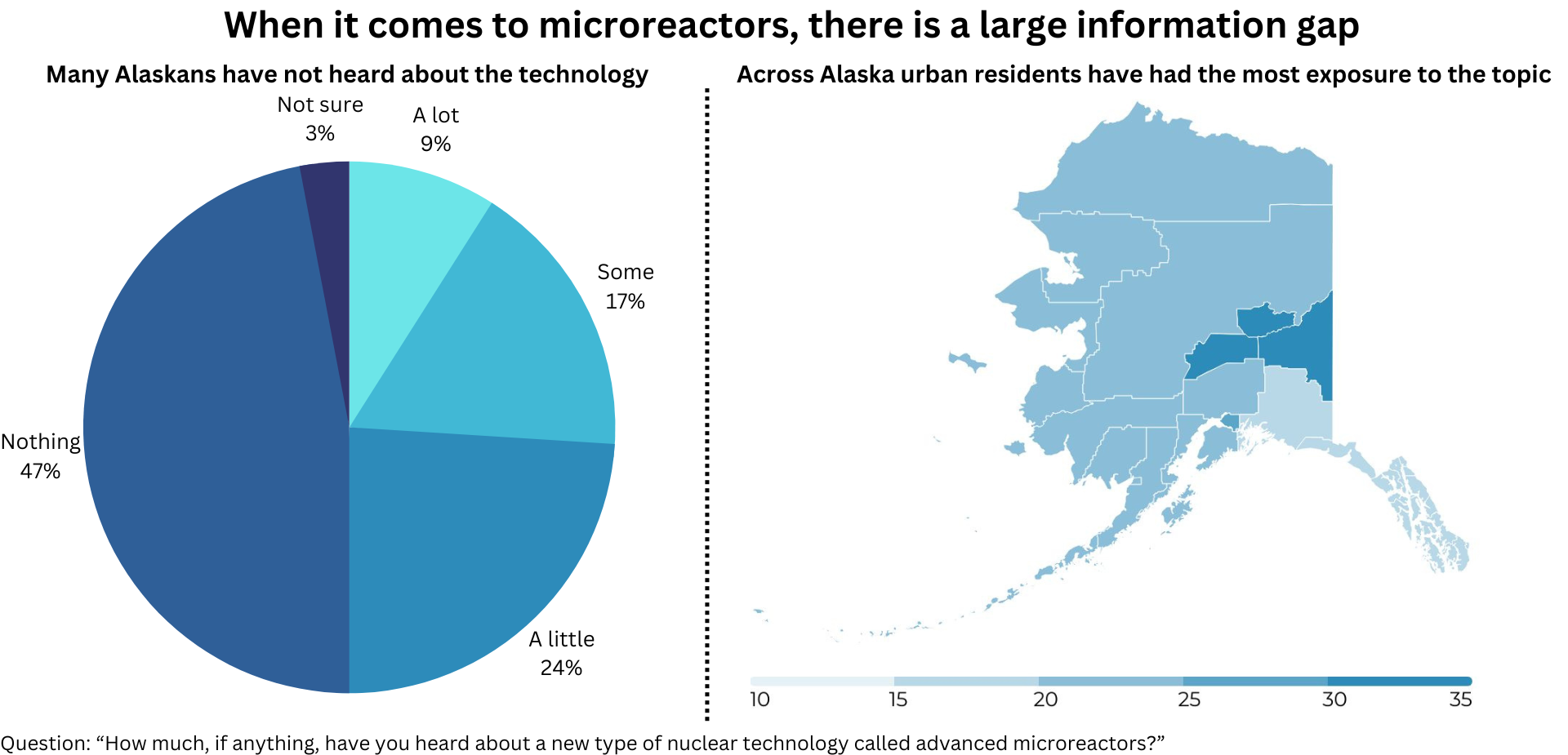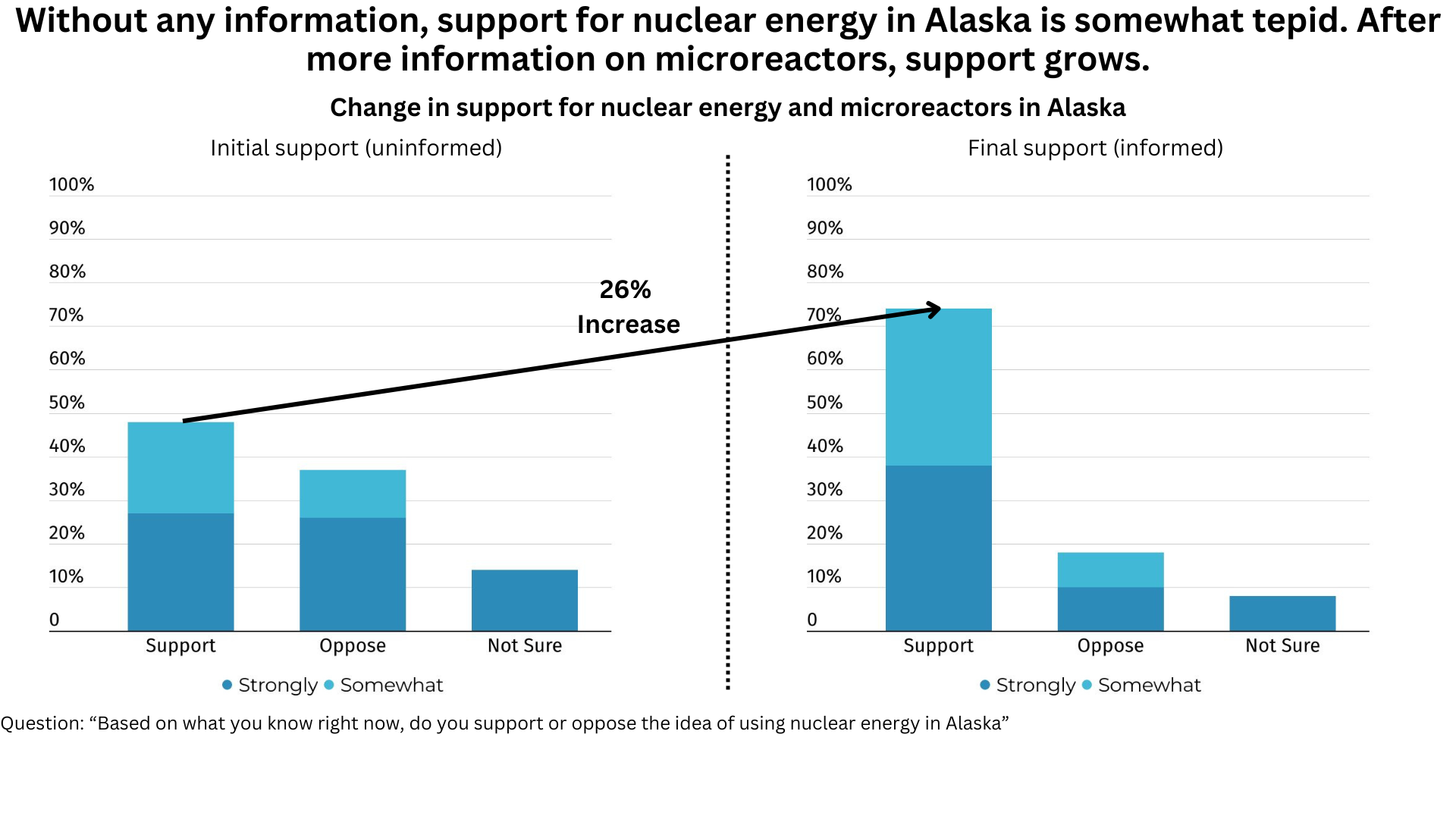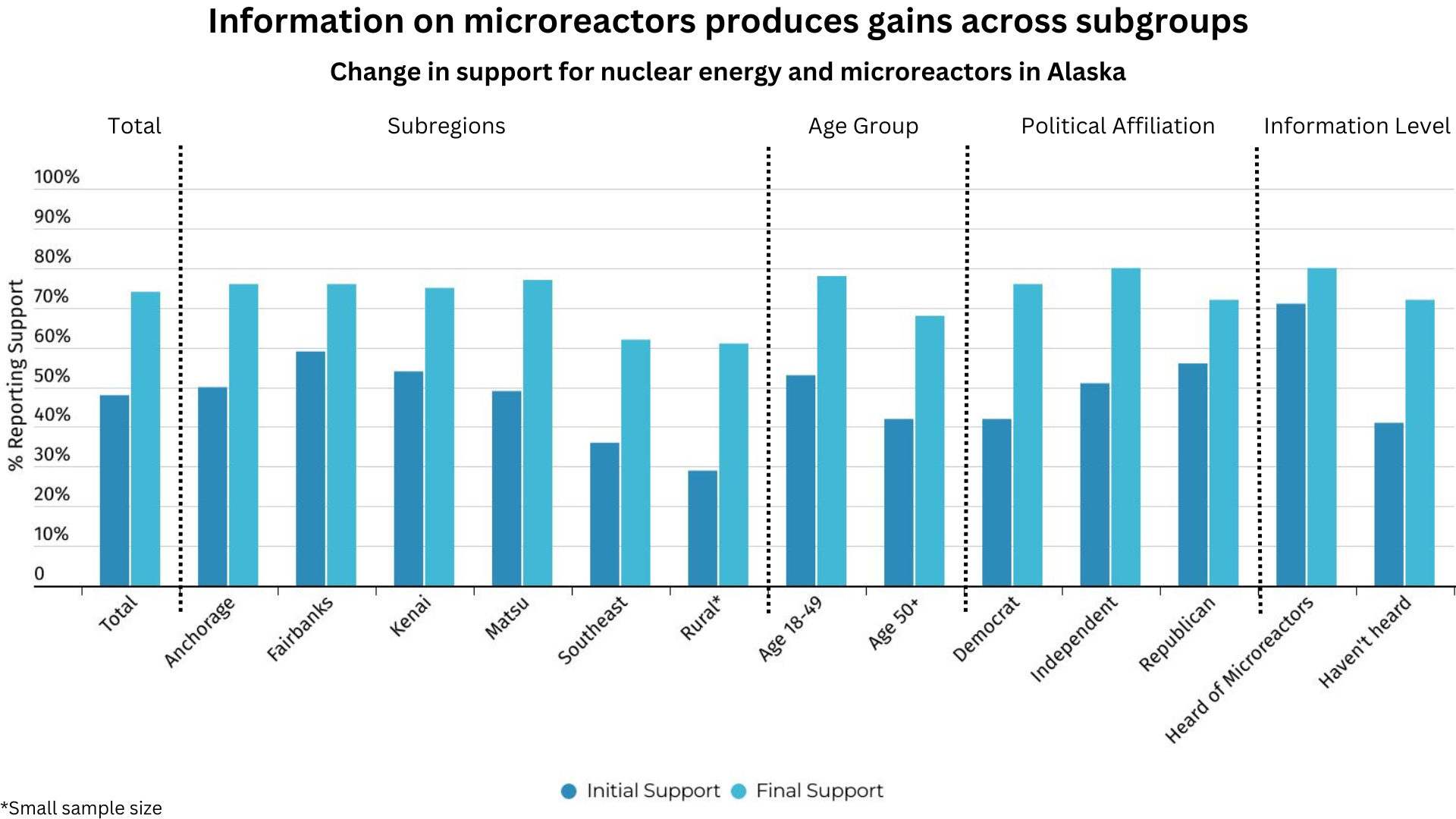Demystifying nuclear energy
By Gwen Holdmann (UAF/ACEP) and Richelle Johnson (UAA/ UA CED), co-Chairs, Alaska
State Working Group on Nuclear Energy
Sept. 15, 2023

Computer generated visual of the Aurora microreactor, Oklo Inc. Oklo was selected as the vendor for the Eielson AFB microreactor.
Public opinion about nuclear energy is often shaped by big events and popular culture, with many people not feeling they fully understand the topic. Accidents like the Fukushima and Chernobyl disasters leave lasting impressions because of their frightening nature. Debates about how to manage long-term disposal of nuclear waste has encountered strong NIMBY pushback, and left the industry in limbo. And, in many minds the word “nuclear” is intimately connected to weapons, making it difficult to detangle from its association with Hiroshima, or dystopian movies like The Day After. Because of this, opinions about the future role nuclear energy might play as part of our energy mix remain varied, complex, and evolving.
Alaskan Perceptions
A recent poll conducted by the Alaska Center for Energy and Power at UAF highlights this opinion and information gap. We conducted this poll because the nuclear energy industry is at a critical juncture, having moved away from conventional, large gigawatt-scale reactors to something smaller and inherently safer. These new reactor designs - after decades of development - are now on the verge of commercialization, and Alaska has been widely identified as a potential early adopter. Two weeks ago, the Air Force announced its vendor selection for a small pilot reactor at Eielson Air Force Base. If all goes according to plan, this project will be completed in 2027 and will be the first commercial microreactor in the U.S. (though it's worth noting that several demonstration reactors are expected to be tested before that date).
Despite this momentum, there are many uncertainties related to the timeline for commercialization, cost, regulatory constraints, nuclear fuel supply chain and other factors. One of the biggest unknowns is public awareness and perception, both from the public at large and from Alaskan energy stakeholders. How do Alaskans view nuclear energy, and what shapes their opinions on the matter? What opportunities do they see? What reservations do they have about its implementation? And how do established views on traditional nuclear energy muddle their understanding of newer, advanced nuclear technologies?
Our poll, conducted by Strategies 360, aimed to address these questions. We reached out to 700 registered Alaskan voters, with an oversampling of Fairbanks residents due to the planned Eielson A.F.B. reactor. This public opinion poll marks the first attempt to measure Alaskans' attitudes towards nuclear and various other energy technologies.
The results provided some intriguing insights. A significant takeaway was a general
lack of understanding of the difference between traditional nuclear and advanced nuclear,
especially microreactors. Of the poll respondents, 71% knew nothing or very little
about microreactors. Even though there was a heightened awareness in Fairbanks, the
overall understanding remained limited. This limited awareness impacted respondent’s
opinions pertaining to nuclear energy, at least in the context of energy solutions
for Alaska.

When it comes to microreactors there is a large information gap. Interior residents have heightened awareness, but overall understanding remains low.
When asked about their support for using nuclear energy in Alaska without prior context, 48% of respondents expressed support, while 37% were opposed. To better understand how additional information about the technology could influence these levels of support, poll participants were provided with a brief description of microreactors:
“A nuclear microreactor is a small nuclear reactor that is much smaller than conventional nuclear technology. Microreactors are essentially a small nuclear-powered battery. They vary in size based on the manufacturer, but in general would be small enough to fit inside a shipping container and produce around 10 MW, which could power around 7,000 homes and also provide heat. Because of their small size, microreactors use much less nuclear fuel and cannot melt down. They also do not require water for cooling.”
After receiving this information, respondents were queried about any change in their level of support. With more information, support for nuclear energy and microreactors in Alaska grew an average of 26%, with significant change across all geographic, demographic and political categories. This considerable shift underscores the pivotal role of public education in shaping perceptions and fostering confidence in such technologies.

Education makes a significant impact on support of nuclear energy and microreactors.

Impacts of information sharing on support for microreactors can be seen across all geographic, age, and political categories.
The survey also highlighted areas of public concern. The foremost of these was the potential contamination of the environment and water, cited by 79% of respondents, followed closely by waste fuel disposal concerns at 78%. Safety concerns for local communities were also pronounced, with 73% expressing some apprehension. For those who expressed support for the technology, the cost of energy and security of fuel supply lines both stood out, with each concern shared by 64% of these respondents.
One key takeaway is the importance of education, not about what nuclear energy is, necessarily, but how this new generation is different. Information clearly changes public opinion on nuclear energy. However, to be impactful that information should be shared by trusted sources. Among poll respondents, the most trusted sources for information about energy solutions include the University of Alaska and local electric utilities.
What’s next?
Public understanding plays a critical role in ensuring informed community consent and fostering comfort with any new technology or project. This requires meeting Alaskans where they are - including gauging their current level of awareness and concerns about energy issues broadly.
As a follow-up, ACEP will be conducting in-depth interviews with key stakeholders. These discussions aim to delve into the nuances of perceptions, potential deployment scenarios, as well as the opportunities and challenges surrounding them. We expect these conversations will provide a richer perspective on what truly resonates with Alaskans when it comes to advanced nuclear energy. Armed with this information, we plan to craft a comprehensive communication and education strategy, which will be a cornerstone of the broader Alaska Advanced Nuclear Energy Roadmap process.
Nuclear energy is coming to Alaska. We can either observe from the sidelines or take an active role in determining how, where, and when this technology can best serve the interests of Alaskans. That decision rests with all of us. Our goal is to empower ourselves and fellow Alaskans with knowledge, enabling us to make informed decisions about our future energy options grounded in facts and well-informed reasoning.
Gwen Holdmann is the founding director of the Alaska Center for Energy and Power at UAF. She has been researching the potential of nuclear microreactors in Alaska for over a decade. Richelle Johnson is the lead analyst for the University of Alaska Center for Economic Development at UAA, and the lead author of a market analysis for microreactors. Access to their reports or information on how to join the state working group is available here.


